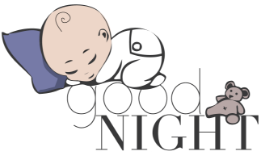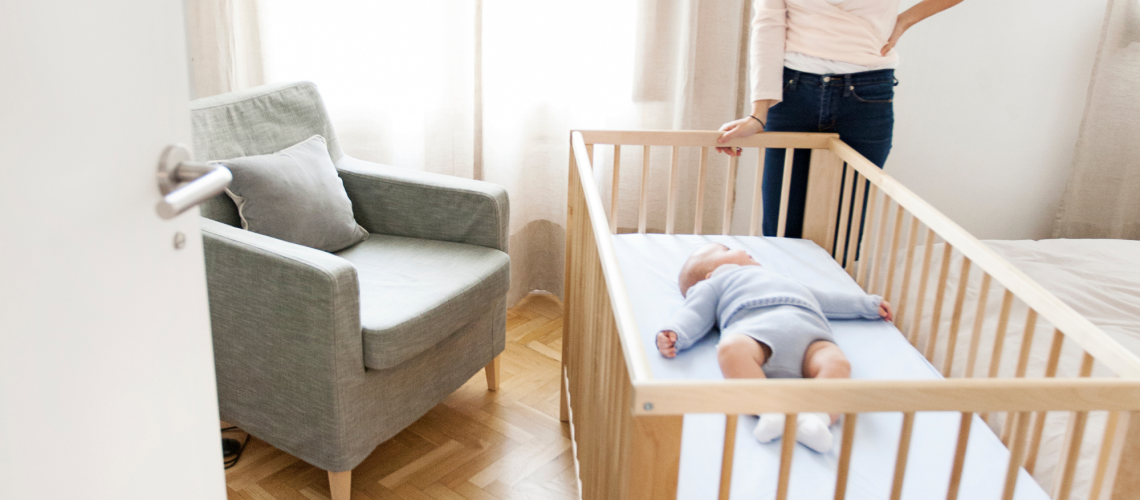By Angelique Dormhel – Good Night Consultant
When we get the news that we are expecting a little bundle of joy, we experience so many emotions and thoughts simultaneously. It’s like a runaway train that’s not going to stop any time soon …
We eagerly wait till we know the sex of the baby to start planning the nursery and embark on our shopping spree for the perfect nursery for our new bundle of joy. As moms, we automatically go into nesting mode when we hear the good news. It is paint, a cot, bedding, teddies, mobiles and so much to buy for one little human. The perfect nursery is a non-negotiable!
But once we come home with our brand new, perfect little human, we soon realise that teddies and bumpers might not be the best option for an infant’s cot. The first thing we should have considered was to create a safe sleep environment and not necessarily a pretty one. The American Academy of Pediatrics (AAP) Safe Sleep guidelines will help and guide you to create the best and safest sleep environment for your baby. A safe sleeping environment will reduce the risk of SIDS as well as all other sleep-related deaths in infants, such as suffocation. Although there’s no guarantee to prevent such tragedy, we can do our part to reduce the risk!
After taking the AAP recommendations into consideration, there are a few basic things to start off with, such as whether our infant is sleeping in our room or in their own room.
- Our baby has to sleep alone in their own bassinet, crib or cot without any bumpers or toys. An infant should sleep in their own safety-approved cot, crib, bassinet or co-sleeper and never in chairs, couches, beds, hammocks or sleeping pods.
- Your baby should always sleep in an approved device for infants only. These items should be aligned with the AAP recommendations. Your baby’s sleep environment should also be consistent, so let them sleep in their own sleeping device. The surface should be firm, flat and non-inclined, with a fitted mattress that fits into the cot. This also means no wedges or sleeping pods. There shouldn’t be any loose bedding, duvets, blankets, bumpers, pillows or toys in the cot, as these items pose a suffocation risk to our baby.
- If we consider co-sleeping, we should remember that our infant should sleep in their own separate sleep area / co-sleeper next to the parents’ bed and not in the parents’ bed. The AAP strongly advises against bed-sharing. Co-sleepers are only intended to be used for the first few months due to the weight limit it carries, so always remember to know the manufacturer’s guidelines around this. The AAP recommends freestanding cots rather than a co-sleeper that attaches to a bed due to the risk of your baby becoming entrapped between the bed cot if it’s not installed properly.
- Always let your baby sleep on their back for every nap and bedtime sleep. Back sleeping has been proven to be the safest for babies 12 months and under. This means that tummy and side sleeping should not be considered. Tummy sleeping is one of the leading causes of SIDS and should therefore be avoided at all times.
- Our little humans can also not regulate their own body temperature, so keep your baby’s room temperature cool and comfortable. Remember to never overdress your baby or cover your baby with too many blankets. An approved sleep sack usually does the trick. The best way to keep your baby warm at night is to use an approved sleep sack, nothing more. Keep in mind that the room should also be dark for day- and night-time sleep; any bright lights or outside lights in your baby’s room can influence their sleep.
- Any toys or distracting items, like a mobile in the cot, can be over-stimulating and distracting to your baby and prevent them from having a good night’s rest. So rather use mobiles at the changing area or even play area.
As new parents, we are often overwhelmed by the variety of products out there and new ideas popping up every day regarding our baby’s sleep environment. Always remember to first consider the safety of your little human and then do the fun part. Do not hesitate to speak to your closest professional, like your paediatrician or sleep consultant, or refer to the American Academy of Pediatrics (AAP) Safe Sleep guidelines if you are unsure about the best sleeping environment for your little human.
#sleeptraining

